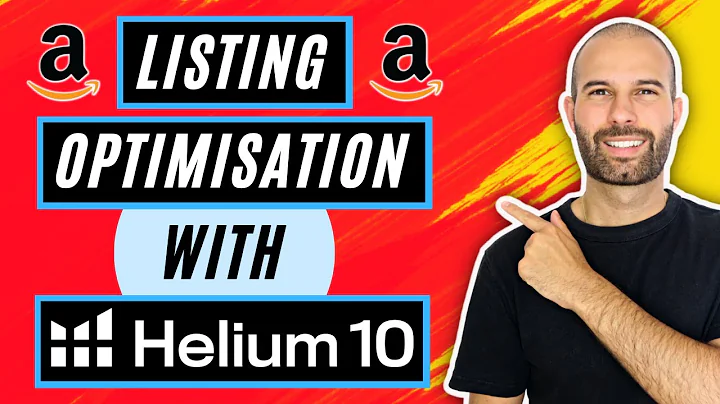The Impact of AMP: How Does it Affect SEO?
Table of Contents
- Introduction
- What is Accelerated Mobile Pages (AMP)?
- Benefits of AMP for SEO
- Improved User Experience
- Increased Page Load Speed
- Server Performance Enhancement
- Increased Conversion Rate
- GDPR Compliance
- Improved SEO Rankings
- Drawbacks of AMP for SEO
- Limited Functionality
- Difficulty in Tracking
- Google's Control Over Content
- Limited Support for Ads
- How to Implement AMP on Your Website
- Installing the AMP WordPress Plugin
- Editing CSS and Code for AMP Optimization
- Conclusion
🚀 Introduction
In today's fast-growing internet world, optimizing mobile pages has become crucial for bloggers, content creators, and website owners. Mobile devices now gather a significant percentage of Google's web traffic, making it essential to create a mobile-friendly experience for users. However, many websites face the challenge of long load times on mobile, resulting in a poor user experience. This is where Accelerated Mobile Pages (AMP) come into play. AMP is an open-source framework introduced by Google and Twitter to make mobile pages load faster and provide an optimized user experience.
📲 What is Accelerated Mobile Pages (AMP)?
Accelerated Mobile Pages (AMP) is an open-source framework developed by Google on October 7, 2015. It was created as a response to platforms like Facebook Instant Articles and Apple News. The primary goal of AMP is to provide a streamlined version of HTML, CSS, and JavaScript, prioritizing speed and readability over complex user experiences. By integrating AMP into your website, you can ensure that your pages load quickly on mobile devices, improving the overall user experience.
💡 Benefits of AMP for SEO
1. Improved User Experience
A fast-loading page is the secret to capturing and retaining mobile traffic. Research shows that a one-second delay in web page speed can decrease conversions by seven percent. Additionally, if it takes more than three seconds for a web page to load, 40 percent of users will abandon the page. AMP enables your website to load almost instantly, enhancing user experience and reducing bounce rates.
2. Increased Page Load Speed
The primary goal of AMP is to improve mobile page load speed. Websites with AMP enabled load in mere tenths of a second, while regular pages take an average of 2.2 seconds to load. By integrating AMP, you can significantly reduce the load time of your web pages, attracting and retaining more visitors.
3. Server Performance Enhancement
Websites with high mobile traffic can put stress on servers. However, AMP can reduce this stress by optimizing page load speed. By utilizing AMP, you can ensure that your website performs well even under heavy mobile traffic, enhancing server performance and improving overall website usability.
4. Increased Conversion Rate
AMP has a significant impact on a website's conversion rate. A 100 millisecond delay in page load time can reduce conversion rates by 7 percent. With faster-loading AMP pages, you can improve your website's conversion rate, ultimately converting more visitors into customers.
5. GDPR Compliance
AMP's new component allows publishers to implement controls that capture user decisions and make user settings available on AMP pages. This compliance with the General Data Protection Regulation (GDPR) ensures that your website meets European legal requirements, providing a better user experience and avoiding legal complications.
6. Improved SEO Rankings
While AMP is not yet a direct ranking factor for Google, AMP-optimized pages often score better rankings. The lightning icon displayed next to AMP pages in search engine results pages (SERPs) increases click-through rates, attracting more visitors. Additionally, enhanced page load speed and user experience contribute to better SEO rankings over time.
🛑 Drawbacks of AMP for SEO
1. Limited Functionality
The strict guidelines of AMP make it challenging to achieve all the functionality of a regular website. Highly functional websites, such as e-commerce platforms, may find it difficult to incorporate all their desired features with AMP.
2. Difficulty in Tracking
AMP pages are not as easy to track as regular pages, as they do not work seamlessly with analytics tools like Google Analytics. Although it is possible to track AMP pages separately, it requires additional implementation and may result in a drop in website traffic if not done correctly.
3. Google's Control Over Content
By adopting AMP, you are limiting yourself to when and how you showcase your content. Google may prioritize serving its interests first, which might not align with the preferences and goals of all website owners.
4. Limited Support for Ads
AMP currently offers limited support for displaying ads. If your website relies on ads for revenue, you may find it challenging to fully monetize your AMP-optimized pages.
📝 How to Implement AMP on Your Website
To implement AMP on your website, follow these steps:
- Install the AMP WordPress plugin by Automatic.
- Activate the plugin and append AMP to all your pages.
- Edit your .htaccess file to redirect mobile visitors to your AMP pages.
- Make necessary changes in the CSS to align your AMP pages with your website's look and feel.
- Ensure your AMP pages are validated and consider running them through the Google AMP testing tool.
- Verify your site with Google Search Console to receive feedback on your AMP integration.
Implementing AMP on your website can be done within minutes, and with the right plugins and resources, you can easily optimize your mobile pages for a better user experience.
🏁 Conclusion
Accelerated Mobile Pages (AMP) offer an excellent solution for optimizing web pages for mobile users. With more than 50 percent of web traffic coming from mobile devices, it is crucial to provide a fast and user-friendly experience. AMP improves page load speed, enhances user experience, and can lead to higher conversion rates. However, AMP does have some limitations in terms of functionality and tracking. By carefully considering the pros and cons, you can determine if AMP is the right choice for your website and mobile content strategy.







